Up Your Alley: Geylang - supper central, buzzing with kampung spirit
Geylang is a "misunderstood" neighbourhood, people who live and work here told us. We explored its back alleys and bustling eateries as part of CNA's series to uncover hidden gems around Singapore.
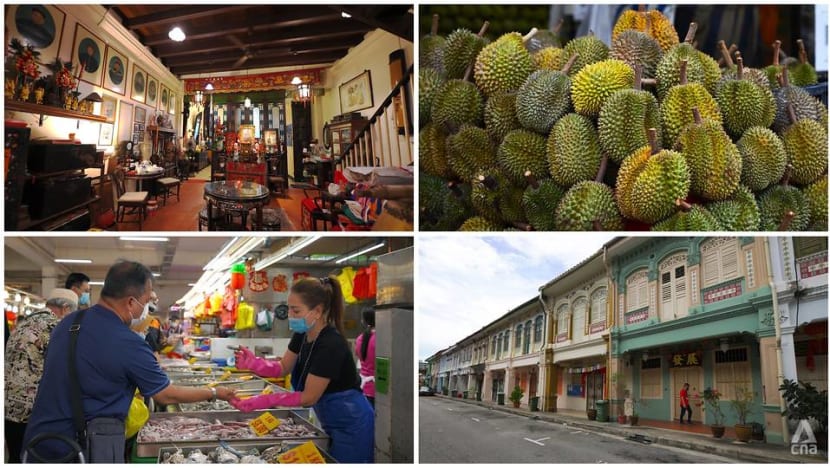
(Left to right) The interior of Eng Tiang Huat Chinese cultural shop, durians on sale at Geylang's unofficial durian street, customers at Geylang Serai Market and the culturally rich and colourful shophouses show another side of the neighbourhood. (Photos: Calvin Oh, Hanidah Amin)
SINGAPORE: Geylang - home to Singapore's red-light district, has much more to offer than nightlife, those who live and work here were quick to tell me.
“Geylang is a neighbourhood that is very misunderstood, but there’s also a certain appeal because of how it’s shrouded in this cloud of danger and mystery,” said Cai Yinzhou, founder of Citizen Adventures, a small business that provides tours around the area.
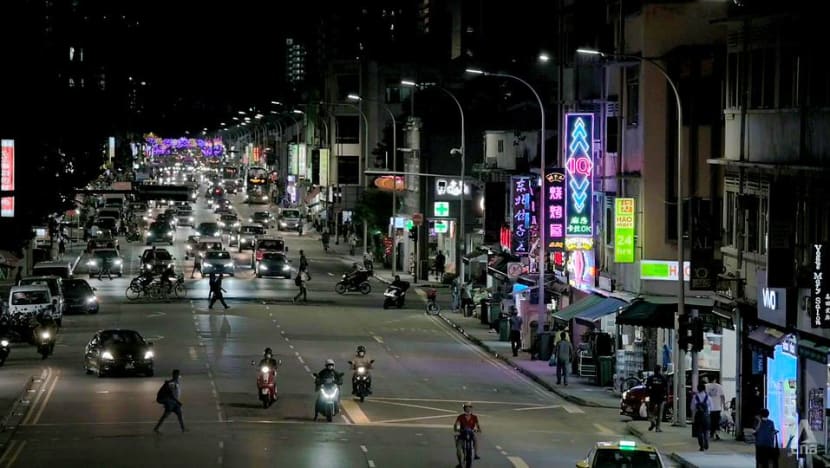
The 31-year-old said Geylang wasn’t safe back when he was growing up, recalling instances when he had to go to his sisters’ aid or accompany them home from the train station if they were returning late.
But things have changed over time.
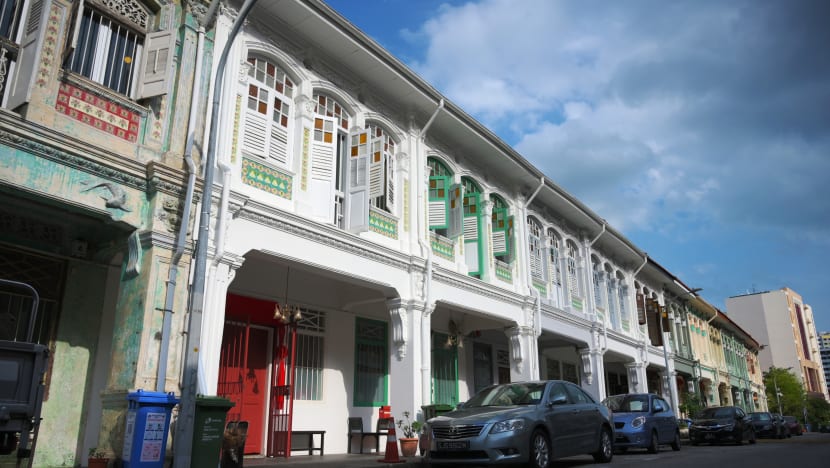
BACK ALLEY BARBERS: CUTTING AWAY BARRIERS
You might have heard of the Geylang Adventures tours which Yinzhou runs, but did you know he is also the founder of a social initiative to help migrant workers get haircuts?
“There are so many people here that are misunderstood (here) ... like migrant workers, sex workers and these are the marginalised in society," he said.
“People are curious to know ... about their lives, but don’t really get a chance to interact or understand them,” he added.
He recounted how he used to play badminton with a group of migrant workers behind his house, for example. When he found out one of the workers couldn’t afford to pay for haircuts because of his father’s increasing medical bills, Yinzhou decided to teach himself how to cut hair via YouTube tutorials.
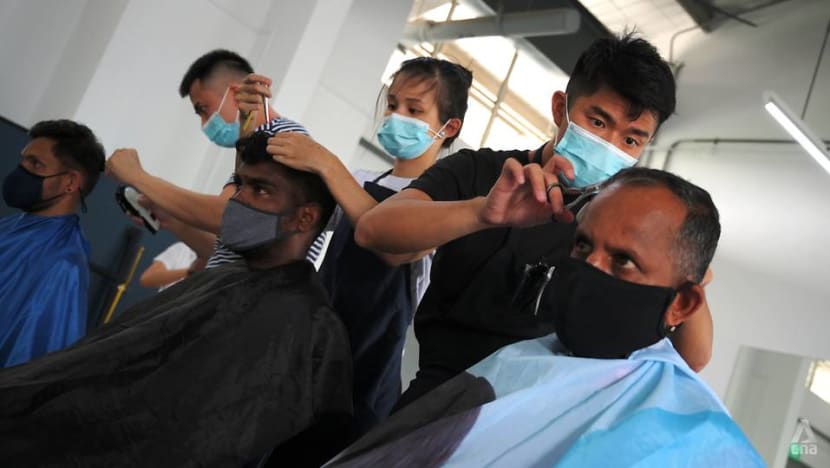
This kickstarted the Back Alley Barbers initiative, which started off at Lorong 24A near Yinzhou’s home in 2014. With just chairs and clippers, Yinzhou and a team of volunteer barbers soon offered haircuts to those who needed them – from cardboard collectors to migrant workers.
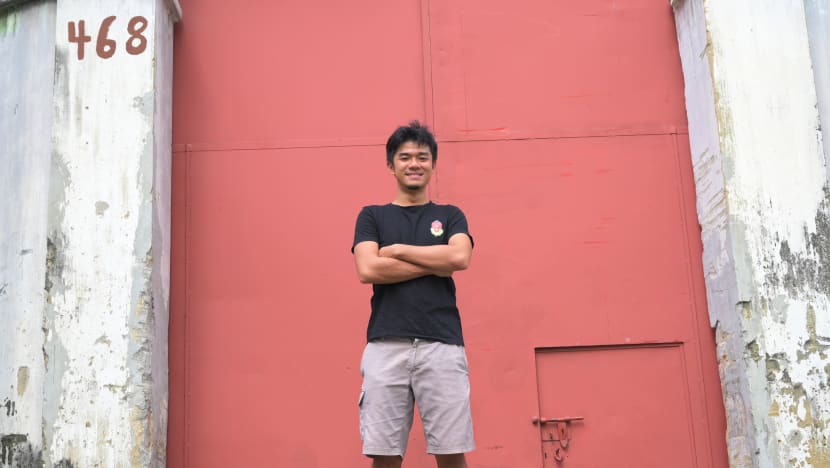
It wasn’t just about giving haircuts, though. Yinzhou described it as similar to a hospital triage zone where their chats would allow the volunteers to better direct those in need of help to the right places.
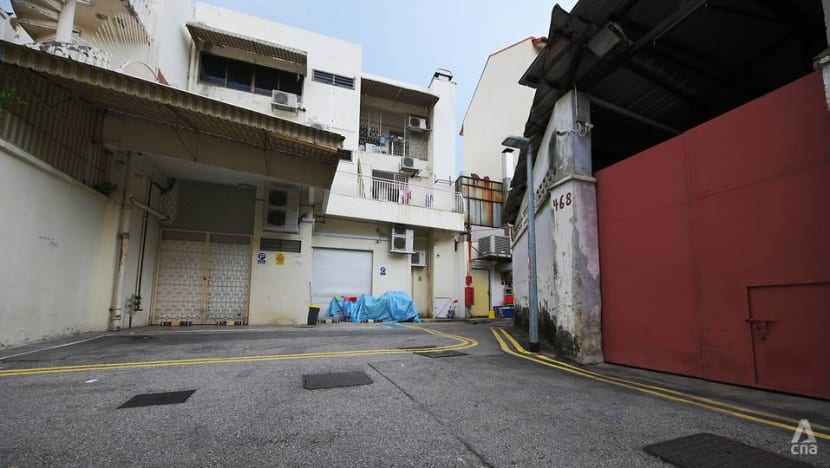
For example, those in need of legal help would be introduced to Transient Workers Count 2 while those in need of medical aid would be directed to HealthServe.
This particular initiative might have been put on hold because of the COVID-19 pandemic, but Yinzhou and his team of about 80 volunteers are continuing to offer their grooming services to migrant workers at their dormitories and wherever there's a need.
ENG TIANG HUAT: STEPPING INTO THE PAST
A stone’s throw away from the Back Alley Barbers is a shop described by visitors as a “living museum” with its memorabilia dating back a century.
Chinese cultural shop Eng Tiang Huat sits serenely at Geylang Lorong 24A, removed from the din of the main thoroughfare, as part of a row of shophouses being conserved by local authorities for its historical value.

Eng Tiang Huat, started by Jeffrey’s grandfather, used to sell items used in Chinese opera - also known as wayang - such as hats, whiskers and other props. Today, the third-generation owner describes this as a "vanishing trade" but he's determined to keep it, and his grandfather's name, alive.

The shop is filled with a myriad of curios and gems from the past such as a typewriter, an abacus, as well as Chinese string instruments like the guzheng and erhu. A trusty Singer sewing machine dating back to 1937 is still whirring and sometimes used by Jeffrey to restore old tapestries.

And he thinks keeping shops like his is important for preserving a slice of Singapore’s past.
“This (lorong) is very nostalgic … if all these are gone, then Geylang is not different anymore and it will be another Chinatown,” said Jeffrey. “Chinatown is no more - it’s just a name. It’s no more that kind of old, traditional Chinatown. It’s a tourist theme park.
“But Geylang, no, here you still have these pockets of (heritage)."
He is also keen on dispelling the notion that Geylang is known mostly for the red-light-district.
"First thing when you mention Geylang, people will say, ‘Oh Geylang the red-light-district!’ But no! The red-light district is only just a small portion of it,” he said.
Currently, the visitors to his store include interest groups, those passionate about arts and culture, researchers, students, professors, photographers and videographers. There have even been tourists who travelled to Singapore just to visit his shop, he said.
“It becomes a happy feeling when people come in – whether you are buying or not buying – but you (discover) something. Not necessarily through my products, but even through the old documents.”
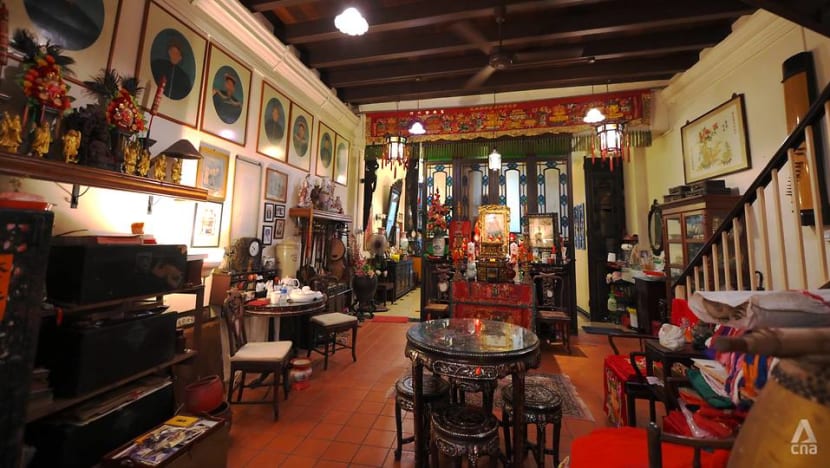
Asked about the oldest items he owns, Jeffrey drew out documents dating back to the 1930s. These include entry permits, title deeds of the shop, and agreements etched on delicate pieces of rice paper - all lovingly preserved by him. And they aren’t for sale.
“Some collectors, they know what I have and they come back to me. They offer me a very good price (but) I still hang on,” he said. “All the documents, the letters, all these things. It’s a family thing ... I just want to hold on to my grandfather’s name.”
He added: “Geylang is about memories … People like me who still remember things must come out and share and tell people these are the authentic things.”
GEYLANG SERAI MARKET: NEW FACES, OLD KAMPUNG SPIRIT
Geylang Serai Market is not new to many Singaporeans, but have you wondered what it means? Serai is actually the Malay word for lemongrass - a smell that was once ubiquitous in the area in the 1840s because it was a cash crop for the Malays who settled there. A lemongrass factory named Kilang Serai eventually gave rise to the name Geylang Serai, according to Roots.gov.sg.
We braved the buzzing market days before the start of Ramadan, and amid the sea of faces, a few stall owners stood out for their relative youth among the more seasoned fishmongers, butchers and other hawkers.
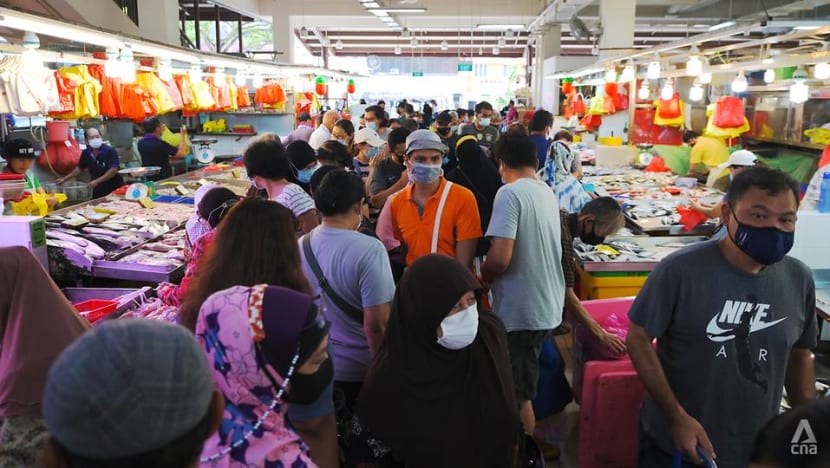
It appears a new generation is preparing to take over from their parents’ businesses at the market, prompted in part by COVID-19 and other circumstances.
Take for example Alfred Goh, who’s playing a bigger role in his family’s seafood business these days. The 32-year-old, who now helps out at the stall while being a debates coach, recalled how fresh seafood was being thrown away daily - sometimes up to 100kg - during the lockdown period because people weren’t buying.
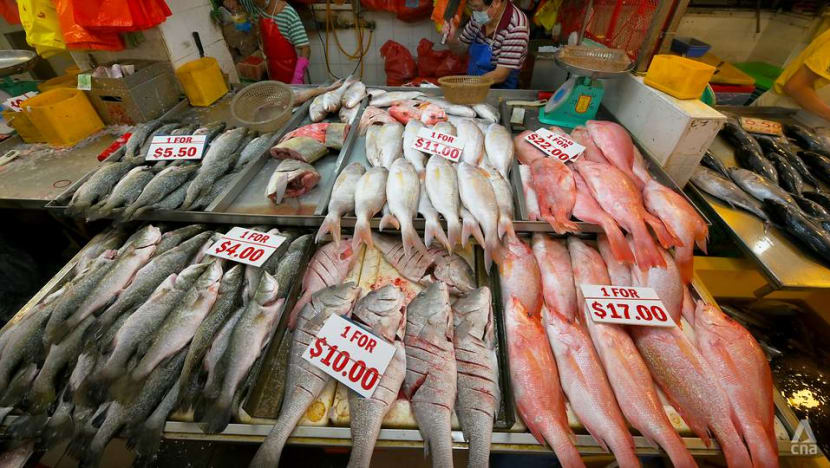
“This is quite a significant financial loss and also it’s a waste of food, so that was very upsetting for me. So what I did was I took a photo and posted it on Facebook and shared it among my social circle (saying) this is the situation … we are throwing away shellfish; if anybody wants shellfish I can arrange,” said Alfred.
“Overnight the post was shared thousands of times. It went viral; I was getting hundreds of messages because it was getting shared,” he added.
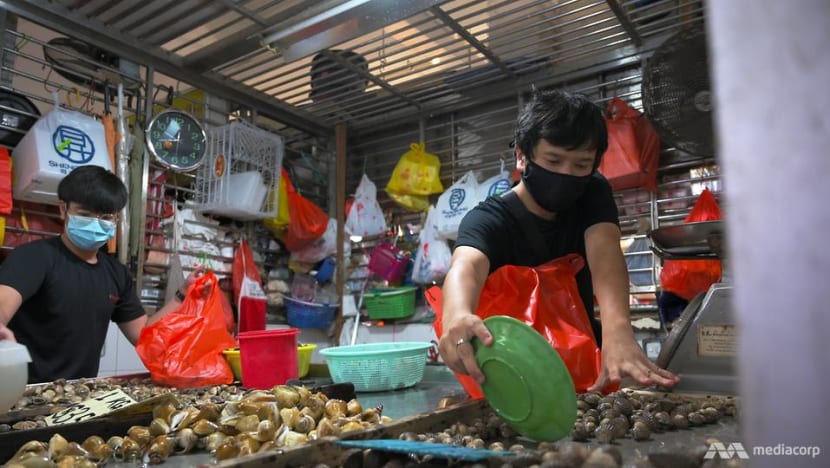
This prompted him to rethink how the business is run and the setting up of Guang’s Fresh Mart online. But despite the online presence, the offline marketplace remains special to Alfred.
“Whatever is left of the kampung spirit survived in this marketplace. Everyone is friendly … (and) there is a real sense of solidarity,” he said, pointing out that while there will be friendly rivalry, the stallowners would rally to help one another when in trouble.
Alfred added: “It feels like home and I feel that’s part of the reason a lot of these stallholders, even in their 60s and 70s, they still go to the market … it’s a sense of community that you cannot get elsewhere.”
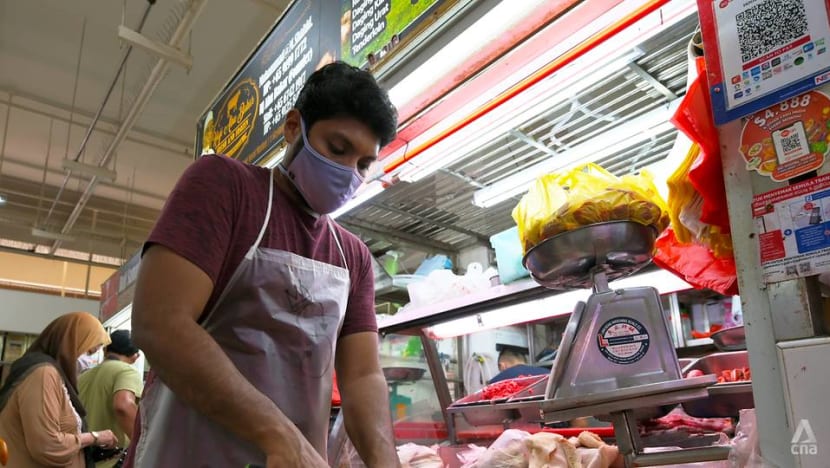
Mohamed Shahid Mohamed Yusoff would tell a similar tale.
Last year’s circuit breaker restrictions meant he had to start an online business from scratch for his father’s stall Haji Abu Bakar Fresh and Frozen Meat Supplier.
“During the circuit breaker, I just took a picture from my stall and I created a post on Facebook saying: ‘Okay, if you want your meat delivered to your house, we provide this service'," the 32-year-old said.
“That night I received a thousand WhatsApp messages (with) people asking from all over the place whether I can supply to them.”
Since then, he has kept busy introducing innovations like digital payment options to make sure the business - which has lasted decades since its early days at Tekka Market - remains relevant to a new generation of customers.
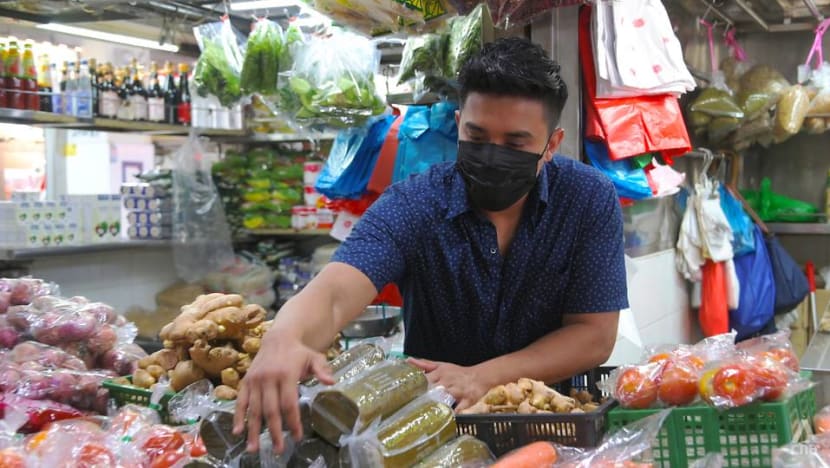
Another young hawker, Muhammad Taufiq Anwardeen, is also confident of Geylang Serai Market's future prospects.
In fact, the former cybersecurity analyst at Citibank believes that Singapore’s hawker culture getting on UNESCO’s intangible cultural heritage list last December is a shot in the arm for the market’s future.
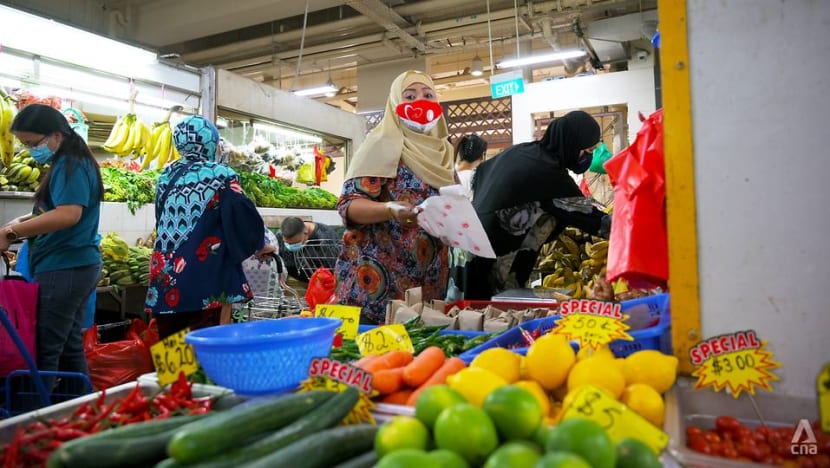
The 34-year-old vegetable and dried goods seller, who took over the stall after his father suffered a heart attack, said: “I know I can pass (this stall) to my grandchild or son. It will be there forever and protected and that alone convinced me to stay there. I won’t move out anywhere (else and) keep this business growing.”
CELEBRITI’S CORNER: A ROJAK OF GOOD FOOD AND FUN
You can hear Celebriti’s Corner - the rojak stall run by Singaporean comedian, singer and actor Roslan Shah - before you see it.
It’s no wonder as the boisterous Roslan can be heard yelling out orders for his rojak and entertaining his customers with jokes, making his stall hard to miss despite it being in a small restaurant called Al-Nour Kitchen at the junction between Lorong 101 Changi and Changi Road.
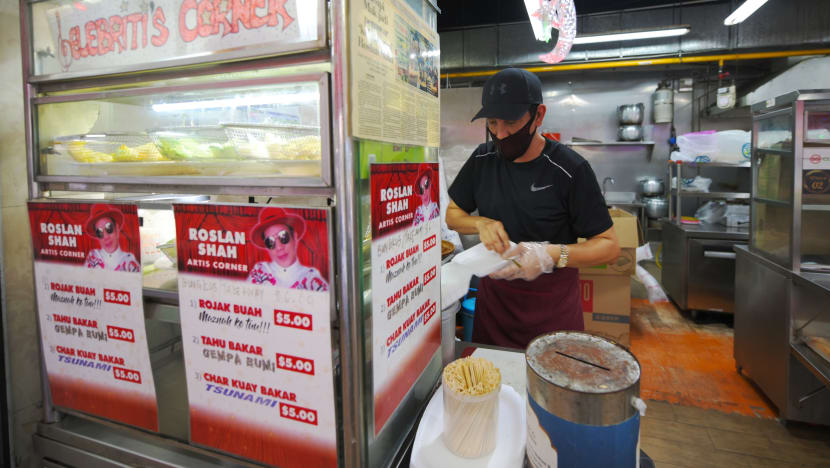
The multi-hyphenate, affectionately known as Cik Lan, returned to Singapore from Malaysia shortly before his mother’s passing in December 2019. But with the COVID-19 pandemic shutting borders, he found it hard to return to Malaysia in early 2020.
Stuck in Singapore, that’s when the 50-year-old decided to pivot from the entertainment sector to the food and beverage scene. “We cannot approach the Government to support us every day to give money … so we must do something. We cannot keep asking money from the Government. We must do work to find the money ourselves,” he explained.
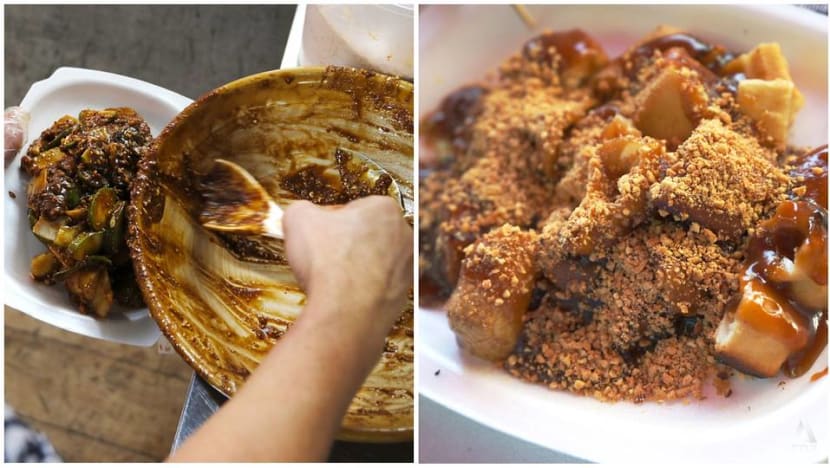
Armed with his late mother’s rojak recipe - one boasting a thick and rich peanut sauce and a generous helping of fruits and vegetables - Roslan set up Celebriti’s Corner with the help of another local celeb Alias Kadir.
It may just have three items on the menu, but the stall has been a hit with his fans. Other local celebrities such as Aisyah Aziz, Suraya Hassan and Iskandar Ismail have also been known to patronise his stall.
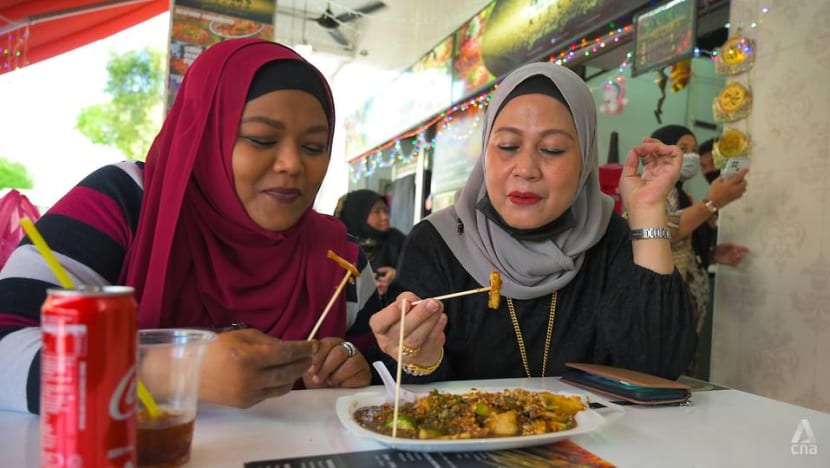
And his star power has also rubbed off on Al-Nour’s, with the owner Riskandar Roslan saying that Cik Lan’s Facebook Live video streams “really helps” its business.
“(Roslan) is unique … He only sells three things but he pulls in a lot of customers. Every table definitely has one rojak or char kuay (fried dough sticks) or his specialty (Maznah Ke Tu, a dish named after a line in P Ramlee's movie),” Riskandar added.

Proof of his pull: In just the few minutes it took the CNA team to set up for this interview, more than 300 viewers were queuing to tune in to his Facebook Live stream as it was rare for him to give an English interview.
Roslan attributes his popularity to his larger-than-life personality that looks to entertain, regardless of location.
“I (am a) natural. I (don’t) follow other artistes. People don’t like me I don’t care, because I don’t ask them for money. I like to make people happy.
“If you are very sad at home, very stressed, you come here, I can make you happy,” he said.
DIM SUM AND DURIANS: GEYLANG’S SUPPER SCENE
It’s 11pm, and most eating places in Singapore would be closing up if they've not already done so. This is not so in Geylang, however, as the night is still young and brightly lit food stalls are just gearing up to serve the supper-seeking hordes.
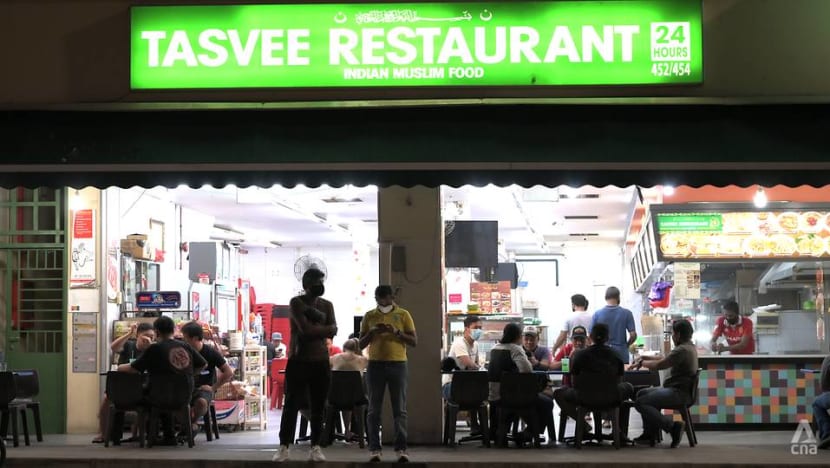
On Geylang Road, Tasvee Restaurant – a place frequently recommended by those we spoke to when there – serves up Indian food and remains open all night for those looking to get their fix of mee goreng (fried noodles) and roti prata (fried Indian flat bread).

Along the same road is Eminent Frog Porridge, a popular food haunt in the neighbourhood. It sells many dishes, but most commonly seen on customers’ tables are its sizzling claypot with frog’s legs accompanied with steaming porridge. (Beware the chili kick.)
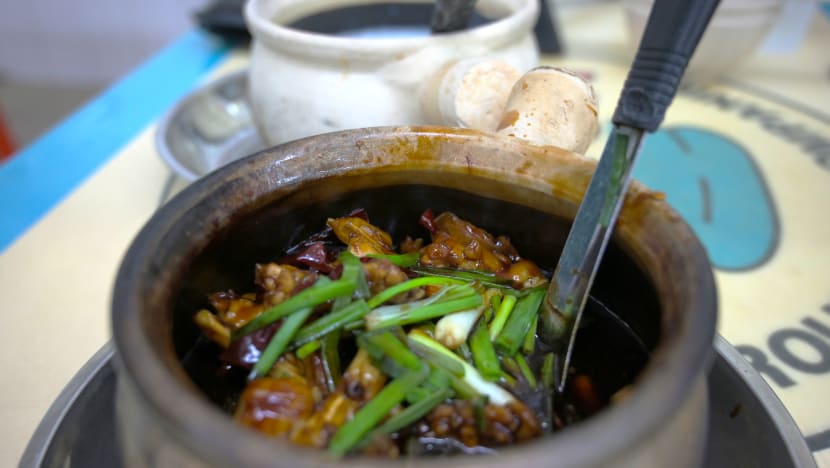
The crowds can also be seen at Sims Avenue where 126 Dim Sum Wen Dao Shi is located. Even at 1am, when we visited the stall, the queue to enter was snaking.
Patrons were willing to brave the cramped space and queues just to get their hands on the smorgasbord of dim sum ranging from siew mai and har gao to char siew bao.


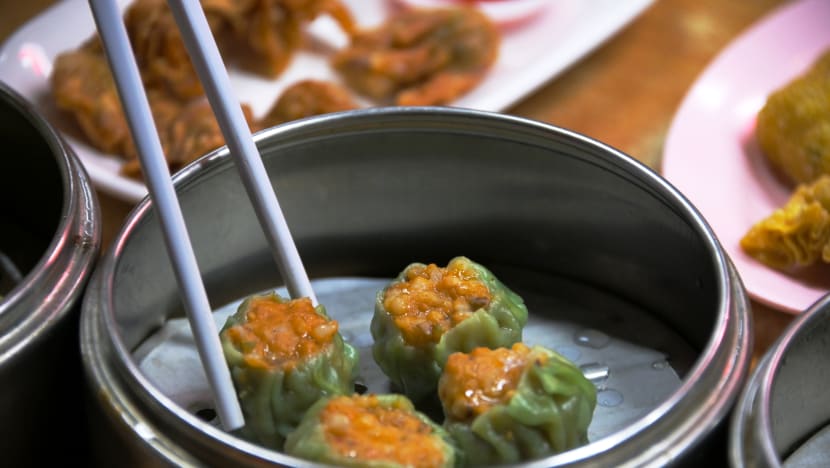
No food run in Geylang is complete without a mention of its unofficial durian street beginning at Sims Avenue. With at least five such stalls lining the street, durian lovers can try different variations ranging from red prawn to D24.
The cheapest durians we found that day, after feasting on the fruit in the name of research, was S$5 a box, and it sure hit the spot.
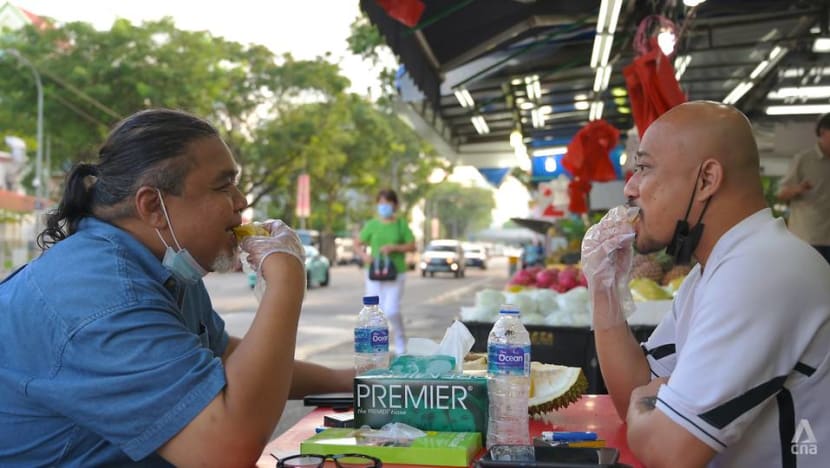
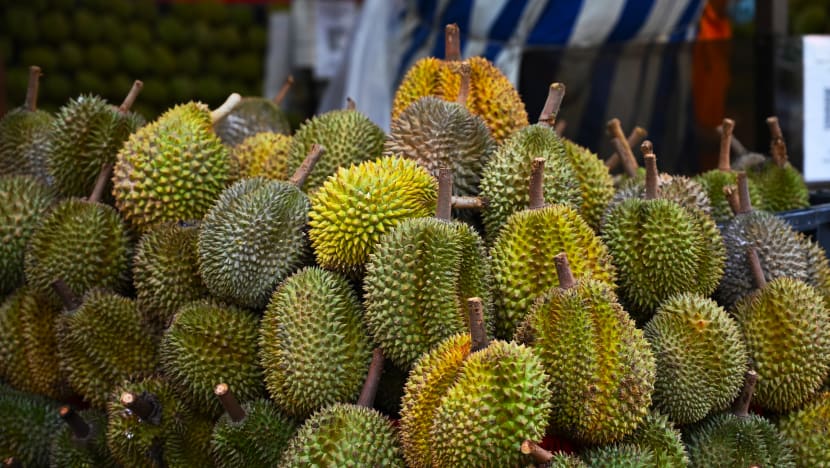
Perhaps durians are as good a representation of the neighbourhood as any, according to Yinzhou.
“I think the charm is that Geylang, people always perceive it from one angle but actually when you look at the complexity, it’s a lot more,” he said.
“Like durian … How would you describe the taste of durian? You’d struggle to describe it. Different durians have different taste, so Geylang is like durian.”
Now it's your turn. We'd like you to tell us what's Up Your Alley. What is it that makes your neighbourhood unique? What are the places visitors may not notice at first glance, but are a unique and intrinsic part of the estate you know and love?
Write to us at digitalnews [at] mediacorp.com.sg (digitalnews[at]mediacorp[dot]com[dot]sg) or message us on Instagram or Facebook. Tell us about some of your favourite spots or about a person who embodies the spirit of the area.
We look forward to hearing from you!














